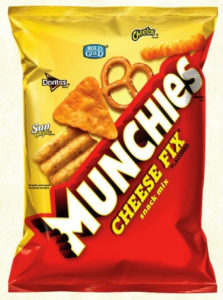“I get no respect!” Are organics the Rodney Dangerfield of food? Organics should be celebrated and touted as the best food for all. Instead organics are like Rodney Dangerfield, the iconic stand-up comedian, who never got the recognition he deserved until he played the self-deprecating respect card. Do organic foods and growing methods get the respect they deserve?
Organic Growing System

Nash’s Best Carrots
The organic food growing system has been around for eternity. It builds the coveted nutrient-rich, dark brown, friable, moist, growing medium in which food is grown. Organic farming is the art of yearly rotating crops from one field to the next, so the bad bugs don’t have the opportunity to destroy a harvest by becoming fruitful and multiplying. Rotating different crops in sequential years from one field to the next is not only good for pest management, but also it also increases soil fertility and crop yields.
Composting on-farm crop wastes recycles and returns beneficial organisms and humus back to the soil to replenish and nourish the ground for every years’ crops. Resting and rejuvenating the soil for a season with a nitrogen fixing (often low monetary but high soil and ultimately food nutrient value) cover crop replenishes and rejuvenates the soil. Companion planting, another method to ward off bad bug invasions, increases pollination possibilities, and creates habitat for beneficial bugs. [My own experiment with companion planting is growing bush beans with tomatoes in a large pot on my deck. Planting garlic with bush beans is a big companion planting “no-no.”] With all these benefits of the organic growing system, why is organic production only four percent of the total U.S. food sales?
Farmers have been growing organically since the beginning of farming. With the advent of chemical farming after World War II and the dependency on single crop farms managed with synthetically made fertilizers, herbicides, and pesticides, our agricultural system is vastly changed from its original agrarian roots.
Our Current Food System

Top Ingredient Corn Munchies
Before the post World War II Green Revolution, organic farming was the tried, true and only way to grow food. The Green Revolution transformed everything. Its noble goal was to feed the world and it excelled at that objective. It succeeded in reducing worldwide hunger, but at what cost? The Green Revolution fostered an industrial food system that is still the predominant food growing, processing, and delivery structure to this day. Crop conformity with hybridized seeds benefiting from extensive irrigation systems and the application of synthetic fertilizers, pesticides and herbicides to increase yields is the dominant agricultural paradigm. Agricultural scientists developed seeds that took some of the uncertainty out of food growing. Farmers were given guidelines, instructions, and research from the Land Grant Universities on when to apply synthetic chemicals to the fields or crops throughout the year to boost yields. Granted, the farmer still had to worry about too much or not enough rain, too much or not enough heat and a myriad of other concerns. Even so, by making each type of crop a commodity–more similar than dissimilar so that a crop such as corn could be generic and interchangeable–eaters lost variety, flavor, health benefits, and a relationship with their farmer and where the food came from. Of course, the big food processors and grocery chains favored the industrialized system with uniform, predictable crops as it made it easy to purchase and create food products that could be sold to the masses.
The outcome of this agricultural system is that mainstream, conventional food stores’ products now offer multiple concoctions of products with corn, soybeans and wheat–the top three agricultural revenue generators and crops that cover our farmland in the United States.
Organics Market Share
Those that either demanded or mourned the loss of quality, healthy, and tasty foods of days gone by, worked to develop a nationwide organic standard. The National Organic Program was established in 1990 with its rules enacted in 2002. Since the organic rules were published, nationwide organic food consumption has increased by double digits each year which sounds impressive. What is unimpressive is that organic sales are only four percent of the total U.S. food sales. In any other industry, a four percent market share after 16 years is considered paltry.
So, why don’t organics get the respect they deserve? My quest is to find out. I’d love to hear your thoughts!
Kathryn Gardow, P.E., is a local food advocate, land use expert and owner of Gardow Consulting, LLC, an organization dedicated to providing multidisciplinary solutions to building sustainable communities. Kathryn has expertise in project management, planning, farmland conservation, and civil engineering, with an emphasis on creating communities that include food production. Kathryn’s blog muses on ways to create a more sustainable world and good food!

